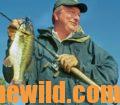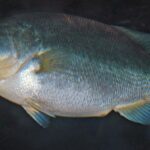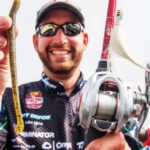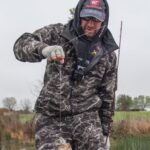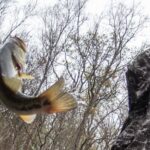Editor’s Note: Davy Hite of Ninety Six, South Carolina, has retired from fishing and is now working as a color commentator for Bassmaster. He’d tournament bass fished for years and was one of the top 10 money-winning anglers of all time. Today we’ll learn how Hite found big bass each January and February in the lakes of the eastern U.S.
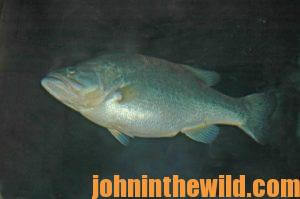 I fish South Carolina’s Lake Murray and Lake Greenwood, which is above Lake Murray on the Saluda River. But during January and February, I like to fish Lake Greenwood best. On Lake Greenwood, I have more opportunities to catch an 8-pound bass than on Lake Murray. During January and February, our bass are in the pre-spawn mode on this lake. I have a better chance of catching a 10 pounder on Lake Greenwood than on Lake Murray. Typically, the water temperatures at this lake are in the mid to upper 40s at this time of year. If a strong warm front or a cold front doesn’t come through, I’ll be primarily fishing soft and hard jerkbaits over deep water.
I fish South Carolina’s Lake Murray and Lake Greenwood, which is above Lake Murray on the Saluda River. But during January and February, I like to fish Lake Greenwood best. On Lake Greenwood, I have more opportunities to catch an 8-pound bass than on Lake Murray. During January and February, our bass are in the pre-spawn mode on this lake. I have a better chance of catching a 10 pounder on Lake Greenwood than on Lake Murray. Typically, the water temperatures at this lake are in the mid to upper 40s at this time of year. If a strong warm front or a cold front doesn’t come through, I’ll be primarily fishing soft and hard jerkbaits over deep water.
I’m looking for deep water close to shallow water with severe drop-offs, where the bass can sit in staging areas and move up or down the water column very easily. You have to decide what type of cover – brush piles, rock and/or sandy or clay banks – the fish prefer on the day you’re fishing. If you’re looking at a map, the places where you find bottom contours with the lines really close together, indicating sharp drop-offs close to shallow water, are generally where you’ll locate bass at this time of year.
 Most of the time in the winter, throughout our region, bass will be suspended, holding up in a water column, instead of relating to the cover or to the bottom. That’s why we use jerkbaits. There are a lot of good jerkbaits, but I like to fish the Rapala (https://www.rapala.com/rapala/lures-by-type/jerkbaits/) and the Lucky Craft
Most of the time in the winter, throughout our region, bass will be suspended, holding up in a water column, instead of relating to the cover or to the bottom. That’s why we use jerkbaits. There are a lot of good jerkbaits, but I like to fish the Rapala (https://www.rapala.com/rapala/lures-by-type/jerkbaits/) and the Lucky Craft
(http://www.luckycraft.com/luckycrafthome/Products/jerkbait/) jerkbaits. You want a soft-plastic jerkbait that sinks slowly. Because the water temperature’s low, and the fish are lethargic, you’ll need a lure that stays in front of the bass for an extended period. Then you can entice the fish to bite.
Bass are kind of like me. If I’m trying to lose weight, and I walk past a piece of pie, I won’t eat the pie. But if I have to look at that piece of pie for a long time and think about it, I’ll eat the pie.
My favorite soft plastic is the Berkley PowerBait Saltwater Jerk Shad (https://www.berkley-fishing.com/products/powerbait-jerk-shad-1285513). I don’t always think that scent in or on plastic lures makes a difference to bass. However, when I’m fishing soft-plastic jerkbaits in January and February, and I’m fishing these lures really slowly, scent in the Berkley baits really makes a difference in whether the bass bite or not.
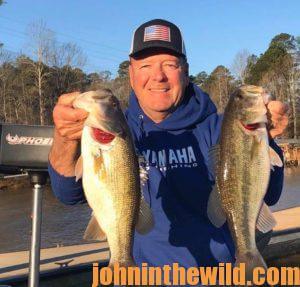 The cover I’m fishing determines whether I fish a hard or a soft jerkbait. If I’m fishing in open water, I prefer a hard jerkbait, because even if the bass just nip at it, those treble hooks will catch them. But if I’m going to let the bait fall all the way down into the cover, I prefer a Texas-rigged, soft jerkbait. At this time of year, I like soft or hard shad-colored jerkbaits. If I’m fishing stained water, I prefer either a black- or purple-black-colored bait on 10-pound-test Berkley Trilene Maxx line or 10-pound-test Berkley Trilene 100% Fluorocarbon line (https://www.berkley-fishing.com/products/trilene100-fluoro-professional-grade-1316958). The fluorocarbon line helps my baits reach a little bit deeper.
The cover I’m fishing determines whether I fish a hard or a soft jerkbait. If I’m fishing in open water, I prefer a hard jerkbait, because even if the bass just nip at it, those treble hooks will catch them. But if I’m going to let the bait fall all the way down into the cover, I prefer a Texas-rigged, soft jerkbait. At this time of year, I like soft or hard shad-colored jerkbaits. If I’m fishing stained water, I prefer either a black- or purple-black-colored bait on 10-pound-test Berkley Trilene Maxx line or 10-pound-test Berkley Trilene 100% Fluorocarbon line (https://www.berkley-fishing.com/products/trilene100-fluoro-professional-grade-1316958). The fluorocarbon line helps my baits reach a little bit deeper.
 I use a twitch-twitch-pause rhythm, and sometimes I’ll pause the bait, and then give it a three-count before I move it again. The trick to fishing the jerkbait is to determine the rhythm of retrieve the bass want on the day you’re fishing. I know some people who will let their jerkbaits sit still for 5 or 6 seconds, or even 2 or 3 minutes before they move them again. But I’m not patient enough to fish that way. My heart only can stand to let a jerkbait sit still for a maximum of 3 to 4 seconds before I have to move it once more. I’m not extremely patient. At this time of year, we may have 25- or 75-degree weather. But any day I fish Lake Greenwood in January and February, I expect to catch a 7-pound-or-better bass.
I use a twitch-twitch-pause rhythm, and sometimes I’ll pause the bait, and then give it a three-count before I move it again. The trick to fishing the jerkbait is to determine the rhythm of retrieve the bass want on the day you’re fishing. I know some people who will let their jerkbaits sit still for 5 or 6 seconds, or even 2 or 3 minutes before they move them again. But I’m not patient enough to fish that way. My heart only can stand to let a jerkbait sit still for a maximum of 3 to 4 seconds before I have to move it once more. I’m not extremely patient. At this time of year, we may have 25- or 75-degree weather. But any day I fish Lake Greenwood in January and February, I expect to catch a 7-pound-or-better bass.
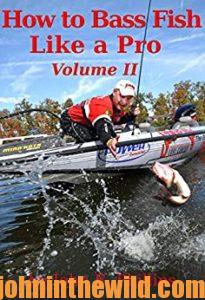 To learn more about catching bass, check out John E. Phillips’ latest book just published in October, 2020, “How to Bass Fish Like a Pro, Volume II,” at https://amzn.to/3kb0QI6, available in Kindle and print and soon to be available in Audible. You may have to copy and paste this click into your browser. (When you click on this book, notice on the left where Amazon says you can read 10% of the book for free).
To learn more about catching bass, check out John E. Phillips’ latest book just published in October, 2020, “How to Bass Fish Like a Pro, Volume II,” at https://amzn.to/3kb0QI6, available in Kindle and print and soon to be available in Audible. You may have to copy and paste this click into your browser. (When you click on this book, notice on the left where Amazon says you can read 10% of the book for free).
Tomorrow: Michael Iaconelli on Northern Bassing in January

